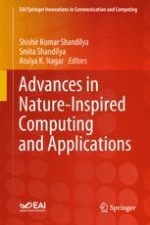2019 | OriginalPaper | Buchkapitel
Application of Nature-Inspired Optimization Techniques in Vessel Traffic Control
verfasst von : Ž. Kanović, V. Bugarski, T. Bačkalić, F. Kulić
Erschienen in: Advances in Nature-Inspired Computing and Applications
Aktivieren Sie unsere intelligente Suche, um passende Fachinhalte oder Patente zu finden.
Wählen Sie Textabschnitte aus um mit Künstlicher Intelligenz passenden Patente zu finden. powered by
Markieren Sie Textabschnitte, um KI-gestützt weitere passende Inhalte zu finden. powered by
